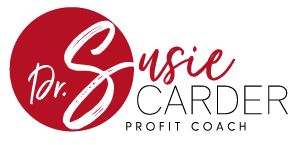
Profit Plan: Build a Profit Plan For Your Business
A strategic, well-crafted profit plan can unlock expansive growth and success. Knowing your goals, controlling expenses, improving cash flow, and implementing plans are vital for a successful business.
This comprehensive guide will delve deep into each of these areas and share proven strategies. So, are you ready to embark on a journey that could redefine the success of your business?
What is a Profit Plan?
Profit planning is creating a roadmap for businesses to make money and achieve financial goals. It gives direction and helps make good decisions. A profit plan sets targets, finds ways to make money, estimates expenses, and follows a clear process. It helps businesses see how they’re doing and make changes to be successful.
Understanding Long-Term Objectives
Long-term goals are super important in a profit plan to give you a clear direction and roadmap for future success. Setting ambitious but doable goals allows you to focus your energy and resources on growing your business.
These objectives are like a compass that guides decision-making and resource allocation. They help prioritize investments, identify opportunities and risks, and shape the company’s direction. Objectives can motivate employees, creating a shared vision and commitment to long-term success and a sense of purpose.
When setting long-term goals, it’s crucial to think about different things like market trends, competition, customer needs, and technology advancements. These goals should be SMART—specific, measurable, attainable, relevant, and time-bound.
It’s important to set goals for the long term to be successful. Start by thinking about what you want to achieve, make sure your goals are specific and measurable, then break your goals down into smaller steps so you can track your progress. Remember to be flexible and adjust your goals if things change.

Reducing Expenses
In today’s economy, cutting costs is crucial for business owners. By using smart strategies, you can stabilize your finances and succeed long-term.
- Streamline processes: Identify areas where there might be inefficiencies or redundancies in your operations. Streamlining these processes can help eliminate waste and reduce costs.
- Optimize resource allocation: Analyze your resource allocation, such as manpower, equipment, and materials. Ensure that resources are being utilized effectively and efficiently to minimize unnecessary expenses.
- Negotiate better contracts: Review your existing contracts with suppliers or service providers. Explore the possibility of renegotiating terms to secure more favorable rates or discounts.
- Embrace technology: Identify opportunities to leverage technology to automate tasks and improve efficiency. This can help reduce labor costs and increase productivity.
- Implement energy-saving measures: Evaluate your energy consumption and consider implementing energy-saving measures. This can include using energy-efficient equipment, optimizing lighting systems, or implementing smart energy management solutions.
- Encourage a cost-conscious culture: Foster a cost-conscious culture within your organization by promoting awareness and accountability for expenses. Encourage employees to suggest cost-saving ideas and reward them for their contributions.
By using these strategies, you can lower costs and improve your business’s financial performance.
Fixed and Variable Costs
Fixed costs are expenses that stay the same no matter how much you produce or sell. They don’t change when your business gets busier or slower. Examples of fixed costs are rent, salaries, insurance, and property taxes.
Fixed costs have a direct impact on profit margins. Since fixed costs do not change, they can greatly affect how profitable a business is. If a company has high fixed costs compared to its revenue, it may have lower profit margins. To handle fixed costs well, businesses can consider strategies like renegotiating lease agreements, making the most of their workforce, and finding ways to save money without sacrificing quality.
Variable costs are expenses that change with changes in production or sales volume. These costs vary based on how much a business is doing. Examples of variable costs include things like raw materials, the cost of labor, packaging expenses, and sales commissions. Businesses need to understand variable costs to accurately figure out how much things cost and make smart decisions about pricing and how much to produce.
Variable costs have a direct impact on profit margins since they change in proportion to production or sales levels. Businesses that have high variable costs could see lower profit margins, especially if they struggle to effectively control or manage these costs.
To control costs that change, businesses can try different strategies like making better deals with suppliers, using lean manufacturing methods, managing inventory better, and getting better at making things. By doing a good job of controlling these costs, businesses can make more money and do better financially.

Utilizing Cash Flow
Managing cash flow is important for a business to succeed. It means keeping a close eye on how money comes in and goes out. This helps the business run smoothly and stay financially stable.
By handling money well, businesses can have enough cash to cover expenses, reduce risks, and take advantage of opportunities to grow. Watching the net profit margin can indicate how financially healthy the business is.
Managing cash flow involves different things. First, you need to predict how much money will come in and go out based on sales estimates, payment terms, and expenses. This helps businesses plan for any money shortages and directs how to allocate windfalls.
Next, businesses should use strategies to speed up the money coming in and slow down the money going out. This means doing things like giving customers discounts for paying early, negotiating longer times to pay for things with suppliers, and finding the right amount of inventory to keep costs low.
Having a healthy cash reserve or contingency fund is super important in case unexpected things happen or there are money emergencies. This fund is like a safety net that helps with unexpected expenses or when there’s not enough money coming in for a little while. A cash reserve will allow a business to keep going without any interruptions.
Managing cash flow is not just about paying bills on time and meeting financial obligations. It also helps businesses stay financially stable in the long run. When cash flow is handled well, it means using resources wisely, finding ways to grow, and relying less on outside money.
In short, managing your cash flow is super important for making a profit. By handling the money coming in and going out, being smart about how you use it, and saving some for emergencies, businesses can stay financially stable, avoid problems, and keep growing.
Here are some valuable tips for greatly improving cash flow:
- Monitor and manage your expenses meticulously. Keep a close eye on your cash outflows and identify areas where you can cut costs or find more cost-effective alternatives.
- Streamline your invoicing and payment processes. Ensure that your invoices are sent out promptly and follow up on any overdue payments. Consider offering incentives for early payments or implementing automated payment reminders.
- Negotiate favorable terms with suppliers and vendors. Find opportunities to negotiate better payment terms, discounts, or volume-based pricing to maximize your cash flow.
- Implement effective inventory management practices. Avoid overstocking or understocking by optimizing your inventory levels based on demand forecasts. This will help reduce holding costs and free up valuable working capital.
- Explore alternative financing options. Consider leveraging financing options like business lines of credit, invoice factoring, or small business loans to bridge cash flow gaps during slower periods or fund growth initiatives.
- Review your pricing strategy. Regularly assess your pricing structure to align with market conditions and allow for healthy profit margins. Don’t be afraid to adjust your prices if necessary to improve cash flow.
- Invest in technology solutions. Embrace digital tools and software that can automate processes, improve efficiency, and provide real-time insights into your cash flow. This can help you make informed decisions and proactively address cash flow challenges.
As you prepare to put your business cost plan into action, keep in mind that consistently monitoring and actively managing your cash flow is paramount. By doing so, you ensure the financial health and success of your business. Now, let’s delve into the final section and explore how to effectively implement your plan.
Turning Your Business Profit Plan into Action
Now that you have a solid business plan in place, it’s time to put it into action. There are key steps and strategies to effectively implement your plan and turn your ideas into reality.
- Define your goals: Clearly outline your financial objectives and what you aim to achieve with your profit plan.
- Analyze your market: Conduct thorough market research to understand your target audience, competitors, and industry trends. This will help you identify opportunities for profit growth.
- Develop a pricing strategy: Determine the optimal pricing structure for your products or services based on market demand, competitor pricing, and your cost structure.
- Streamline operations: Improve efficiency and reduce costs within your business operations. This could involve optimizing processes, automating tasks, or renegotiating contracts with suppliers.
- Increase sales and marketing efforts: Develop a comprehensive sales and marketing strategy to attract new customers and retain existing ones. This may include implementing digital marketing campaigns, improving customer service, or offering promotions and discounts.
- Monitor and analyze performance: Regularly track and evaluate the performance of your profit plan. Use key performance indicators (KPIs) to measure progress and make adjustments as needed.
- Adapt and iterate: Continuously adapt your profit plan based on market dynamics, customer feedback, and changing business conditions. Stay agile and be willing to make adjustments to ensure long-term profitability.
To stay on track, it’s important to not only set clear goals but also regularly review the feasibility of the goals you have set. This means checking how close you are to reaching desired outcomes and making any changes if needed. By doing this, you can make smart decisions and make sure your project is going in the right direction.

- Keep Cash Flowing In
- Build a Foundation for Long-Term Profitability
- Learn to Thrive No Matter What Happens
Conclusion
In conclusion, creating a profit plan is more than just a task. It’s a journey of figuring out your finances and making smart decisions to reach your goals. To help your business grow, know your goals, save money, handle expenses, spend wisely, and implement your business plan.
Remember, having a strong profit plan is important, but it’s also about staying determined and not giving up. Keep focused on your goals, be flexible, and move forward to financial success and stability.
I invite you to share your success stories or challenges in the comments section below. Let’s learn from each other and grow together. Additionally, if you’re looking for further resources or services to help you build a successful profit plan, contact us today to learn more!
Remember, the journey toward financial success starts with a well-crafted profit plan. Get started today and pave the way for a prosperous future!



There are no comments
Comments are closed.